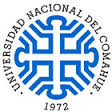JavaScript is disabled for your browser. Some features of this site may not work without it.
Mostrar el registro sencillo del ítem
| dc.creator | Plaza, Pablo I. | |
| dc.creator | Gamarra-Toledo, Víctor | |
| dc.creator | Rodríguez Euguí, Juan | |
| dc.creator | Lambertucci, Sergio A. | |
| dc.date | 2024 | |
| dc.date.accessioned | 2024-03-14T14:28:17Z | |
| dc.date.available | 2024-03-14T14:28:17Z | |
| dc.identifier.issn | 1080-6059 | es_ES |
| dc.identifier.uri | http://rdi.uncoma.edu.ar/handle/uncomaid/17760 | |
| dc.description.abstract | We reviewed information about mammals naturally in- fected by highly pathogenic avian influenza A virus subtype H5N1 during 2 periods: the current p2019). In the current panzootic, 26 countries have reported >48 mammal species infected by H5N1 virus; in some cases, the virus has affected thousands of in- dividual animals. The geographic area and the number of species affected by the current event are considerably larger than in previous waves of infection. The most plausible source of mammal infection in both periods appears to be close contact with infected birds, including their ingestion. Some studies, especially in the current panzootic, suggest that mammal-to-mammal transmission might be responsible for some infections; some mu- tations found could help this avian pathogen replicate in mammals. H5N1 virus may be changing and adapting to infect mammals. Continuous surveillance is essential to mitigate the risk for a global pandemic. | es_ES |
| dc.description.abstract | Revisamos la información sobre los mamíferos infectados naturalmente por el subtipo H5N1 de gripe aviar altamente patógena durante 2 períodos: el actual panzoótico (2020-2023) y las ondas anteriores de infección (2003-2019). En el panzoótico actual, 26 países han reportado 48 especies de mamíferos infectados por el virus H5N1; en algunos casos, el virus ha afectado a miles de animales individuales. La zona geográfica y el número de especies afectadas por el evento actual son considerablemente mayores que en anteriores oleadas de infección. La fuente más plausible de infección de mamíferos en ambos períodos parece ser el contacto cercano con aves infectadas, incluyendo su ingestión. Algunos estudios, especialmente en el panzoótico actual, sugieren que la transmisión de mamíferos a mamíferos podría ser responsable de algunas infecciones; algunas mutaciones encontradas podrían ayudar a este patógeno aviar replicado en los mamíferos. El virus H5N1 puede estar cambiando y adaptándose a los mamíferos infectados. La vigilancia continua es esencial para mitigar el riesgo de una pandemia mundial. | es_ES |
| dc.format | application/pdf | es_ES |
| dc.format.extent | pp.444-452 | es_ES |
| dc.language | eng | es_ES |
| dc.publisher | Centers for Disease Control and Prevention | es_ES |
| dc.relation.uri | https://doi.org/10.3201/eid3003.231098 | es_ES |
| dc.rights | Atribución-NoComercial-CompartirIgual 2.5 Argentina | es_ES |
| dc.rights.uri | https://creativecommons.org/licenses/by-nc-sa/2.5/ar/ | es_ES |
| dc.source | Emerging Infectious Diseases. Vol. 30, No. 3, March 2024 | es_ES |
| dc.subject | Gripe aviar | es_ES |
| dc.subject | Avian influenza | es_ES |
| dc.subject | Mamíferos infectados | es_ES |
| dc.subject | Mammals infected | es_ES |
| dc.subject | Pandemia | es_ES |
| dc.subject | Pandemic | es_ES |
| dc.subject.other | Ciencias de la Tierra y Medio Ambiente | es_ES |
| dc.title | Recent Changes in Patterns of Mammal Infection with Highly Pathogenic Avian Influenza A(H5N1) Virus Worldwide | es_ES |
| dc.type | Articulo | es |
| dc.type | article | eu |
| dc.type | acceptedVersion | eu |
| dc.description.fil | Fil: Plaza, Pablo I. Consejo Nacional de Investigaciones Científicas y Técnicas; Argentina. | es_ES |
| dc.description.fil | Fil: Plaza, Pablo I. Universidad Nacional de Comahue. Instituto de Biodiversidad e Investigación Ambiental. Laboratorio Ecotone; Argentina. | es_ES |
| dc.description.fil | Fil: Gamarra-Toledo, Víctor. Universidad Nacional de Comahue. Instituto de Biodiversidad e Investigación Ambiental. Laboratorio Ecotone; Argentina. | es_ES |
| dc.description.fil | Fil: Gamarra-Toledo, Víctor. Consejo Nacional de Investigaciones Científicas y Técnicas; Argentina. | es_ES |
| dc.description.fil | Fil: Rodríguez Euguí, Juan. Ministerio de Sanidad de Tierra del Fuego; Argentina. | es_ES |
| dc.description.fil | Fil: Lambertucci, Sergio A. Universidad Nacional de Comahue. Instituto de Biodiversidad e Investigación Ambiental. Laboratorio Ecotone; Argentina. | es_ES |
| dc.description.fil | Fil: Lambertucci, Sergio A. Consejo Nacional de Investigaciones Científicas y Técnicas; Argentina. | es_ES |
| dc.cole | Artículos | es_ES |



